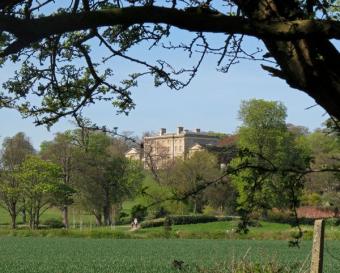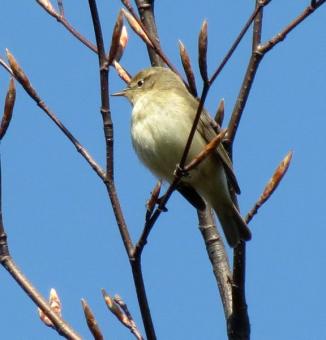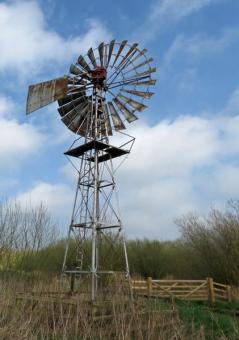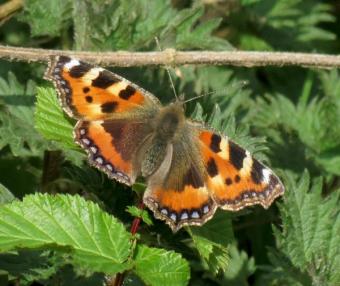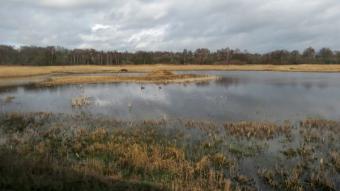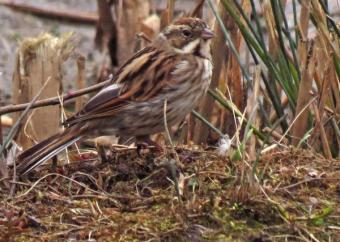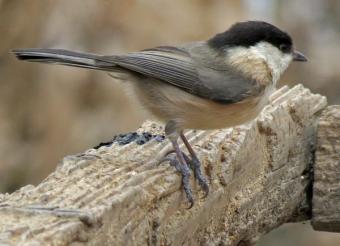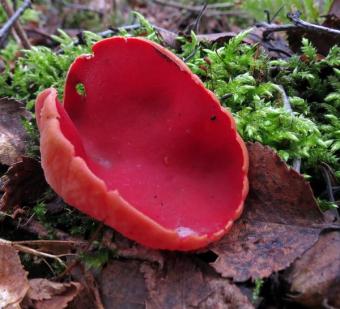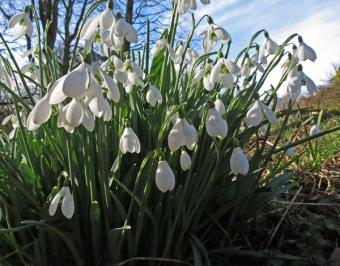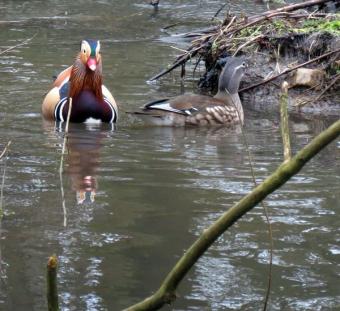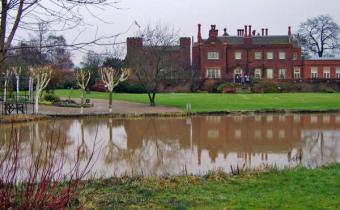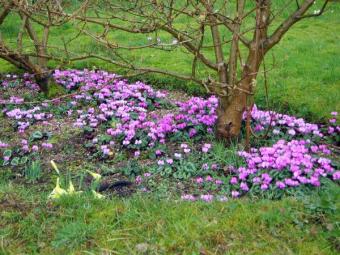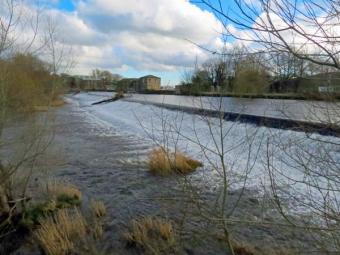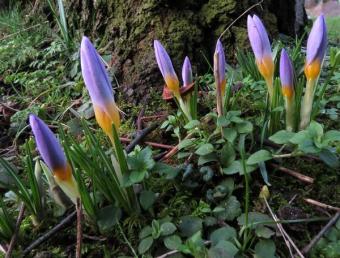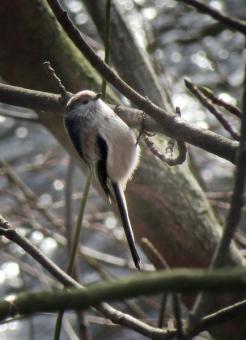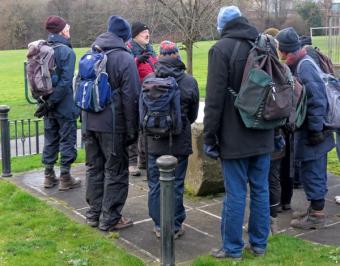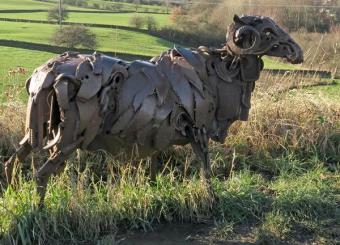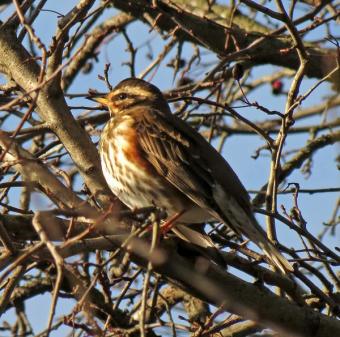WFV, Hetchell Wood YWT Reserve 22nd April 2014
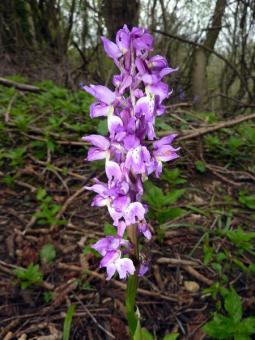 Early Purple OrchidDespite cloudy conditions and some rainfall the Bees party of twelve enjoyed a productive short day out in this species-rich YWT woodland on the outskirts of Leeds. We were well led by Eric who has visited this woodland on many occasions. The bird list was a relatively short one -14 species, notable sightings were Blackcap and Marsh Tit (seen only by John). However it was the spring flora that we delighted in seeing, the count being 42. ( I wonder whether we will exceed this figure on our next visit to Skipton Woods). The woodland contains a mixture of alkaline and acid soils producing an interesting variety of flora. Extensive coppicing of Hazel and other trees has taken place, hence the high numbers of habitat and log piles, creating a more extensive area for woodland flora to generate. This experiment did appear to be bearing fruit or should I say flora.
Early Purple OrchidDespite cloudy conditions and some rainfall the Bees party of twelve enjoyed a productive short day out in this species-rich YWT woodland on the outskirts of Leeds. We were well led by Eric who has visited this woodland on many occasions. The bird list was a relatively short one -14 species, notable sightings were Blackcap and Marsh Tit (seen only by John). However it was the spring flora that we delighted in seeing, the count being 42. ( I wonder whether we will exceed this figure on our next visit to Skipton Woods). The woodland contains a mixture of alkaline and acid soils producing an interesting variety of flora. Extensive coppicing of Hazel and other trees has taken place, hence the high numbers of habitat and log piles, creating a more extensive area for woodland flora to generate. This experiment did appear to be bearing fruit or should I say flora. 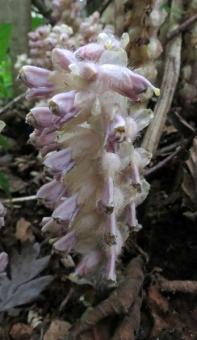 ToothwortThe flora seen can be identified as :- The yellows - Celandine, Marsh Marigold, Primroses, Cowslips, Golden Saxifrage and Yellow Archangel. The blues and purples- Bluebells, Violets Dog and Hairy, Green Alkanet, Early Purple Orchid. The whites - Wood Anemone, Wood Sorrel, Wild Garlic, Dogs Mercury, Jack by the Hedge. The greens - Lords and Ladies, Twayblade (in leaf). The grasses and sedges - Wood melic, Woodrush, Spring Sedge, also a parasite on elm Toothwort. Finally, the fungus species seen was King Alfreds Cakes and the butterfly species seen was Speckled Wood. Regretfully several of our members were missing. We felt our identification skills were gently being rekindled following a period of inactiviity during the winter months. We look forward to our next woodland visit to the Woodland Trust reserve at Skipton Woods. Thanks to Eric for a good day out.
ToothwortThe flora seen can be identified as :- The yellows - Celandine, Marsh Marigold, Primroses, Cowslips, Golden Saxifrage and Yellow Archangel. The blues and purples- Bluebells, Violets Dog and Hairy, Green Alkanet, Early Purple Orchid. The whites - Wood Anemone, Wood Sorrel, Wild Garlic, Dogs Mercury, Jack by the Hedge. The greens - Lords and Ladies, Twayblade (in leaf). The grasses and sedges - Wood melic, Woodrush, Spring Sedge, also a parasite on elm Toothwort. Finally, the fungus species seen was King Alfreds Cakes and the butterfly species seen was Speckled Wood. Regretfully several of our members were missing. We felt our identification skills were gently being rekindled following a period of inactiviity during the winter months. We look forward to our next woodland visit to the Woodland Trust reserve at Skipton Woods. Thanks to Eric for a good day out.
Margaret

